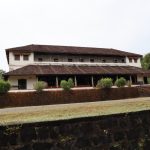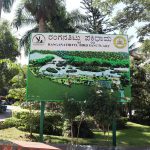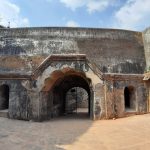Tucked away in the lush green landscapes of Karnataka, Keladi is more than just a historical site—it is a living testament to India’s rich spiritual and architectural legacy. The Keladi Rameshwara Temple, an architectural marvel built during the rule of the Keladi Nayakas, stands as a symbol of divine faith, intricate craftsmanship, and historical grandeur. This temple is not only a place of worship but also a gateway to an era of powerful dynasties, artistic excellence, and deep-rooted traditions.
Beyond the temple, the Keladi Museum and Historical Research Centre offers a fascinating glimpse into the region’s past, preserving artifacts and rare manuscripts that narrate untold stories. Whether you are a spiritual seeker, a history enthusiast, or an admirer of art and architecture, Keladi promises an experience that connects you with the past while inspiring your present.
In this blog, we explore Keladi’s spiritual essence, breathtaking architecture, and historical significance, along with nearby attractions that make this hidden gem a must-visit.
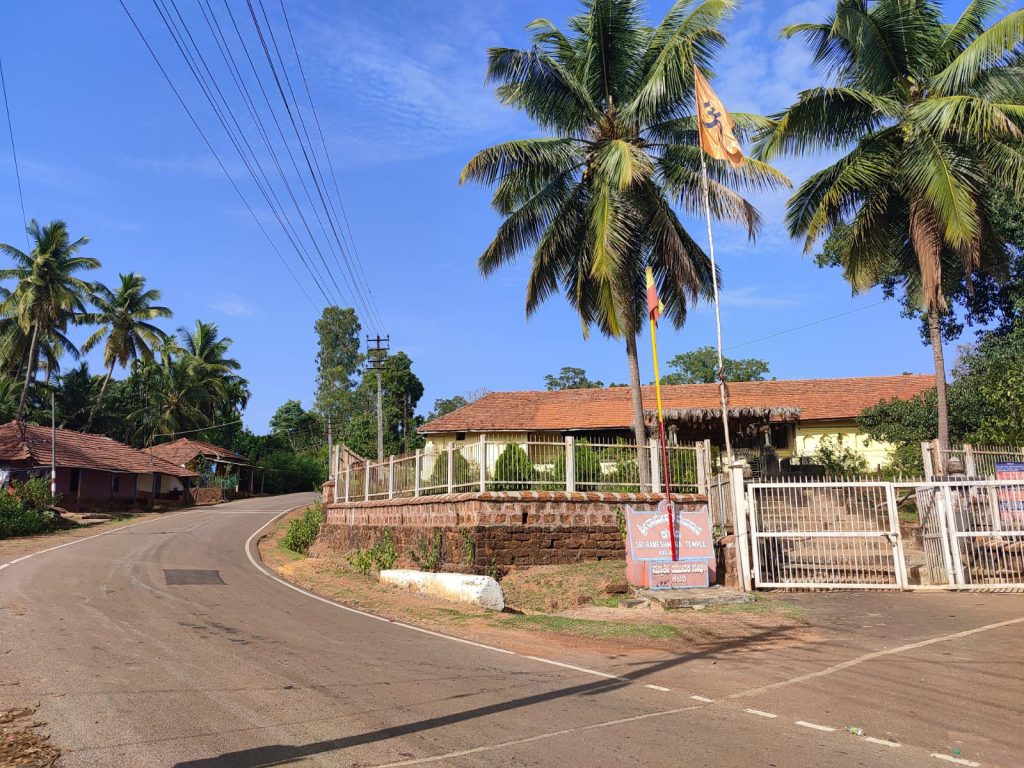
History and Cultural Signifiance
The Rise of the Nayakas: Guardians of Culture and Valor
Keladi emerged as a powerful and influential region in South India during the late 15th century, marking the rise of the Nayaka dynasty. This formidable lineage of rulers ascended to power in the wake of the Vijayanagara Empire’s decline, carving out a stronghold that would stand as a beacon of resistance, governance, and cultural prosperity. The Nayakas, originally military commanders under the Vijayanagara kings, transitioned into independent rulers, skillfully navigating the turbulent political landscape of the Deccan and coastal Karnataka.
Renowned for their military acumen and astute administrative policies, the Nayakas established a strong, self-sufficient kingdom. Their rule was characterized by strategic alliances, maritime trade expansion, and unwavering patronage of Hindu traditions. Their courts attracted scholars, poets, and artisans, fostering an environment where culture, literature, and temple architecture flourished. Many of the architectural marvels of Keladi exhibit a unique fusion of Dravidian, Hoysala, and Vijayanagara styles, reflecting the kingdom’s rich artistic heritage.
Keladi Chennamma: The Warrior Queen Who Defied an Empire
Among the illustrious rulers of this dynasty, Keladi Chennamma stands out as an enduring symbol of resistance, wisdom, and resilience. As the queen of Keladi in the late 17th century, she is best remembered for her bold defiance of the Mughal Emperor Aurangzeb’s expansionist ambitions. At a time when the Mughal forces were sweeping across the Deccan, subjugating regional powers, Chennamma refused to bow to their might.
One of her most legendary acts of defiance was offering sanctuary to Rajaram, the son of the great Maratha ruler Shivaji, who was being pursued by Aurangzeb’s forces. This act of courage not only demonstrated her unwavering commitment to protecting Hindu sovereignty but also positioned Keladi as a formidable bulwark against Mughal imperialism. Despite facing immense military pressure, Chennamma’s astute leadership and strategic brilliance enabled her forces to resist Mughal aggression, ensuring Keladi’s autonomy.
Her reign also reinforced the kingdom’s dedication to culture and spirituality. She was a generous patron of temples and the arts, preserving and promoting the region’s traditions amid external threats. Even today, Keladi Chennamma’s name is etched in history as a warrior queen who stood against the might of an empire, embodying the spirit of courage, self-rule, and unwavering devotion to her people.
The Legacy of the Nayakas
The Keladi Nayaka dynasty left an indelible mark on South Indian history, not only through their military resilience but also through their contributions to art, literature, and governance. They played a crucial role in preserving Kannada and Sanskrit literary traditions and maintained strong maritime trade networks that bolstered their economy.
Their rule stands as a testament to the power of regional dynasties in shaping India’s history, proving that even in the face of imperial ambitions, the spirit of self-governance and cultural preservation can thrive. The legacy of the Nayakas, particularly that of Keladi Chennamma, continues to inspire generations, making Keladi not just a historical site but a symbol of resilience and heritage.
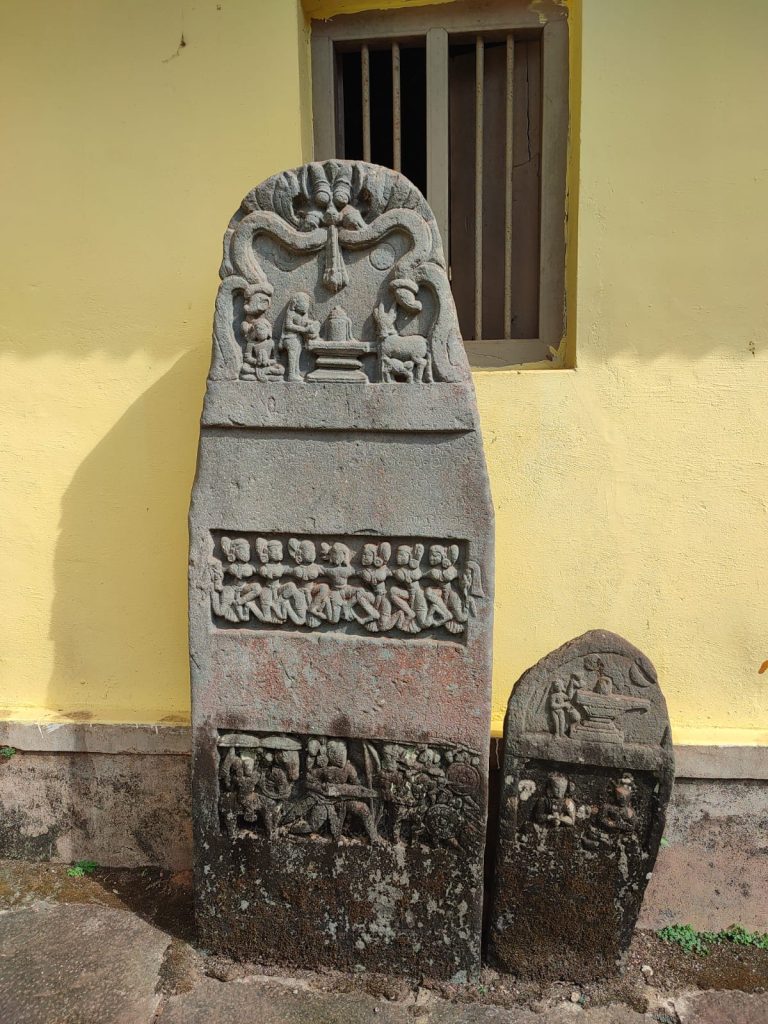
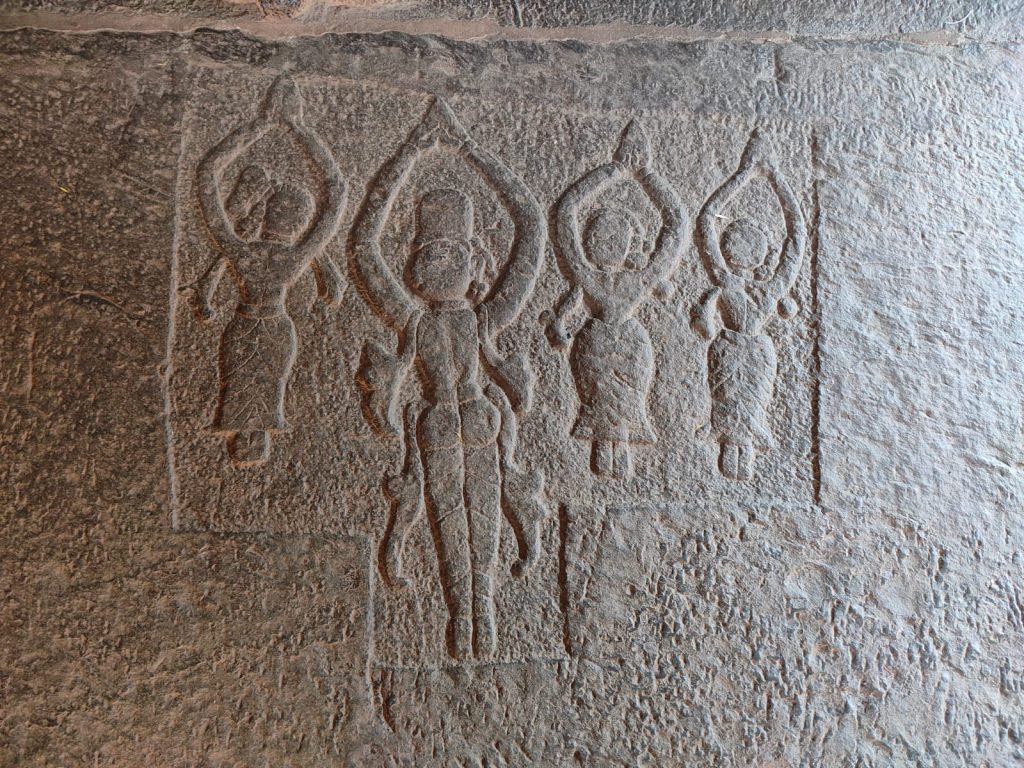
Keladi Rameshwara Temple: A Reflection of the Past
Overview of the Temple Complex
The Keladi Rameshwara Temple is an architectural gem dedicated to Lord Rameshwara (Shiva), with additional shrines for Goddess Parvati and Lord Veerabhadra. Unlike many South Indian temples, Keladi’s temple structure is unique in its integration of stone and wooden carvings, making it one of the most fascinating temple designs in Karnataka.
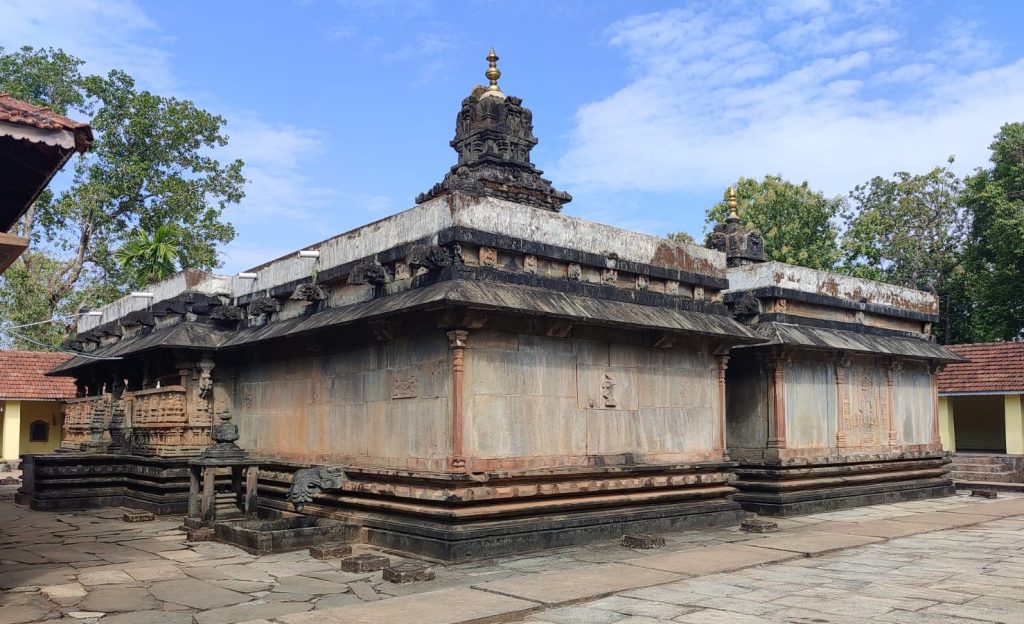
Architectural Brilliance
The temple’s design is a harmonious blend of multiple architectural influences, each adding to its spiritual and aesthetic appeal:
- Dravidian Influence – The sanctum (garbhagriha) and pillared halls (mantapa) follow the classic Dravidian temple layout, adorned with carvings of Hindu deities.
- Hoysala Influence – The intricate stone reliefs depicting epics like Ramayana and Mahabharata are reminiscent of Hoysala craftsmanship.
- Vijayanagara Influence – The grand entrance, ornate pillars, and open courtyards reflect Vijayanagara’s temple architecture.
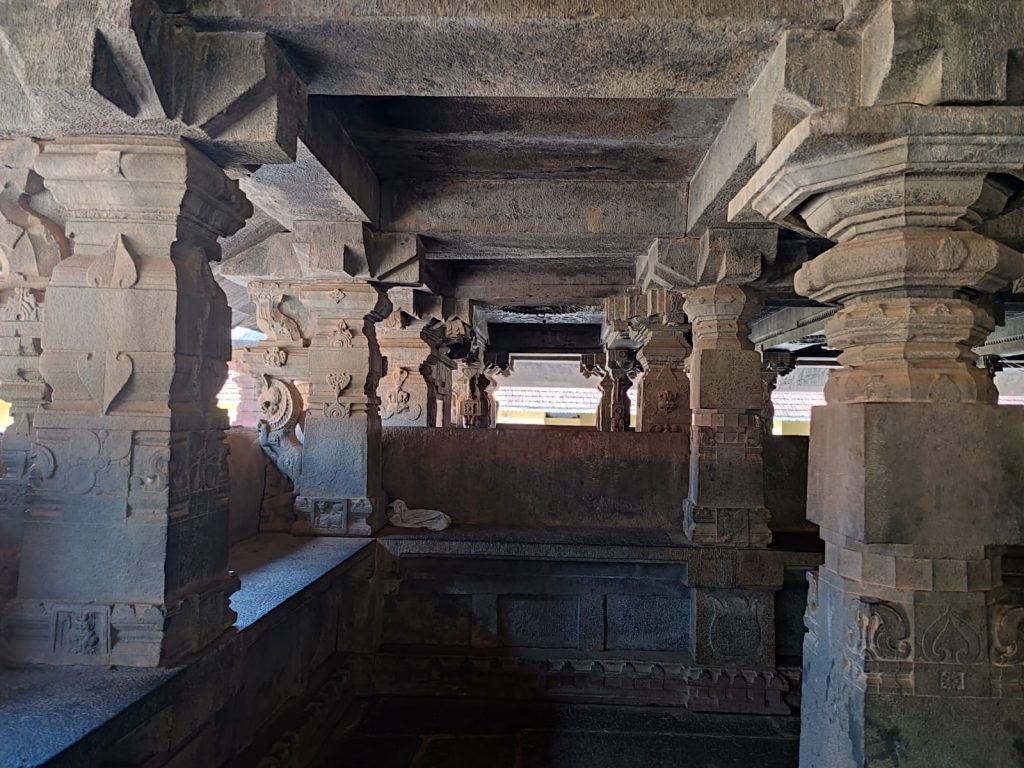
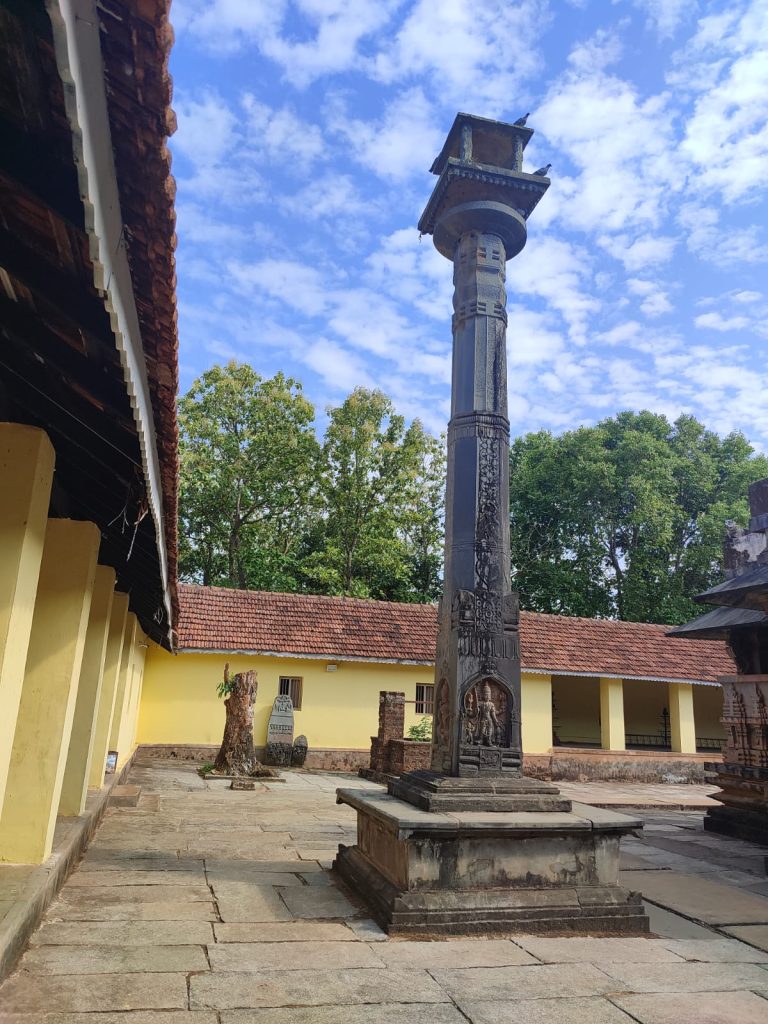
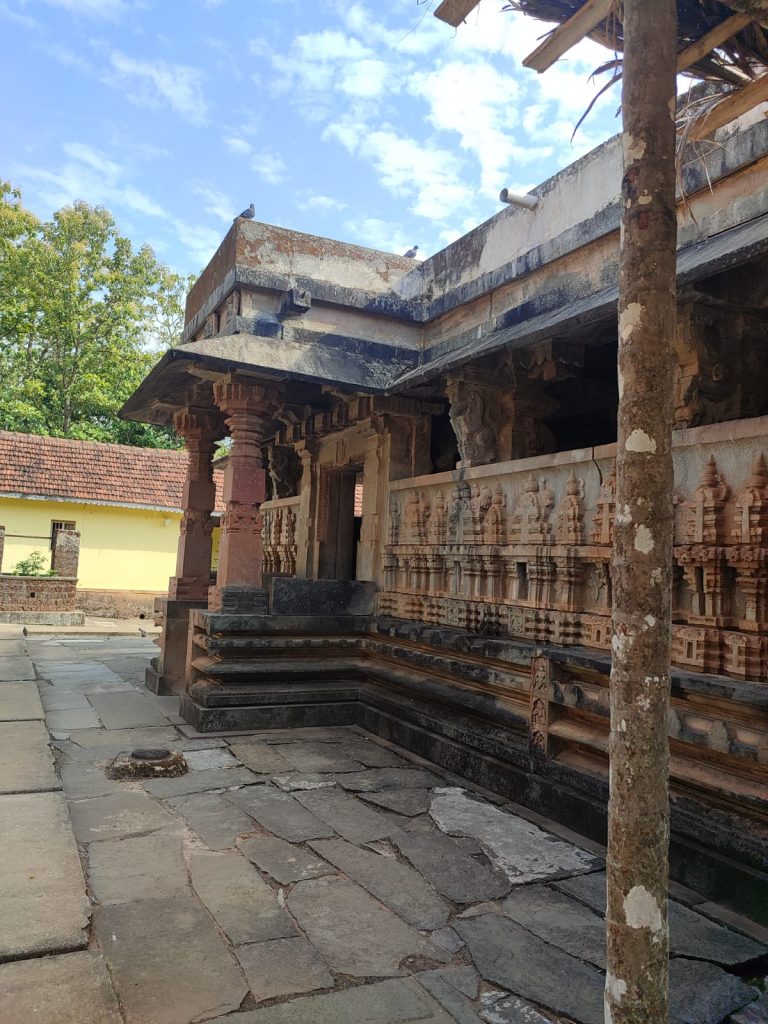
Intricate Carvings and Sculptures
Every corner of the temple is a masterpiece of artistic excellence. The pillars feature elaborate carvings of celestial beings, mythological creatures, and scenes from Hindu mythology. The ceiling panels, made of wood, depict floral designs and divine figures, adding a distinct aesthetic appeal to the temple.
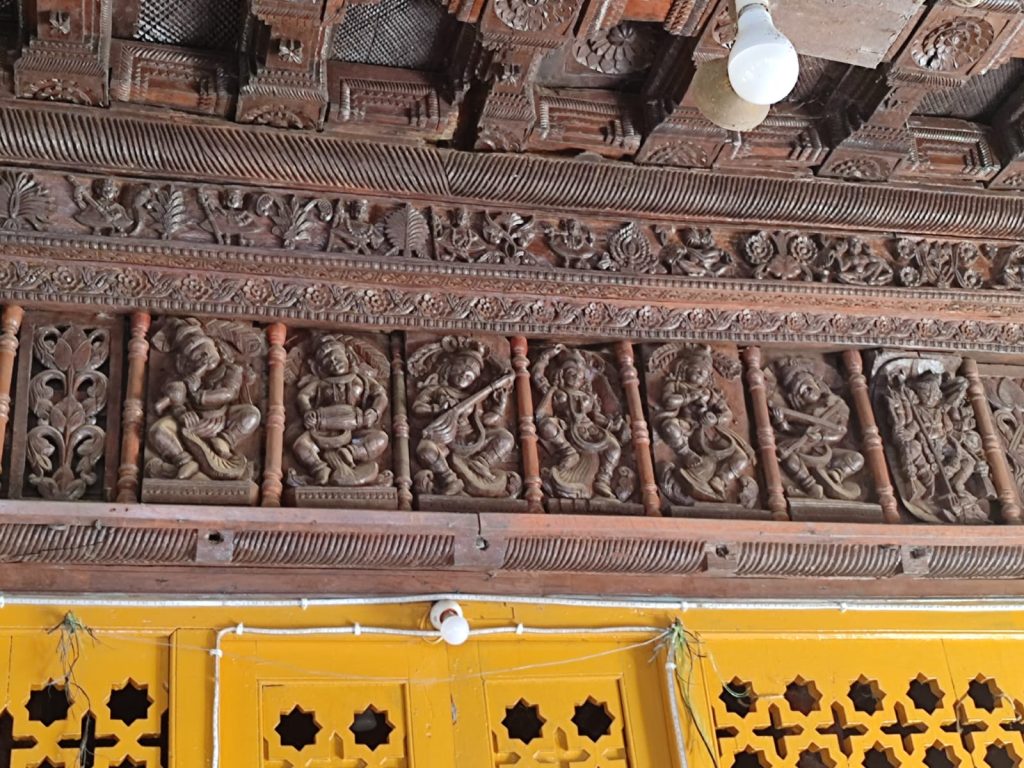
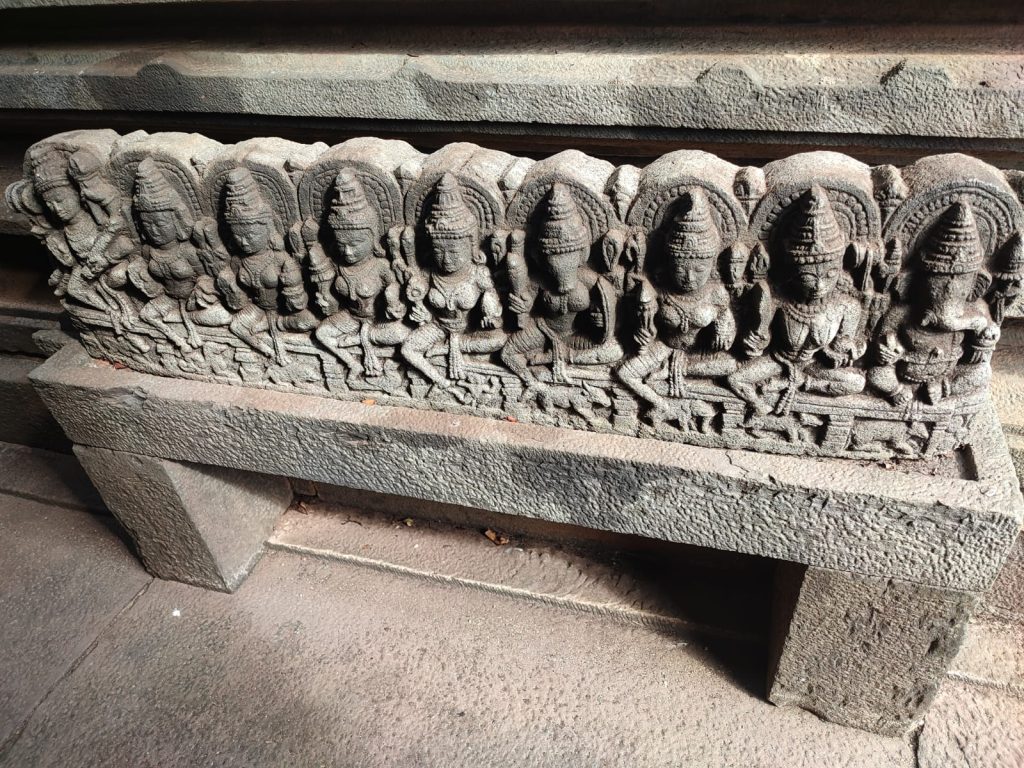
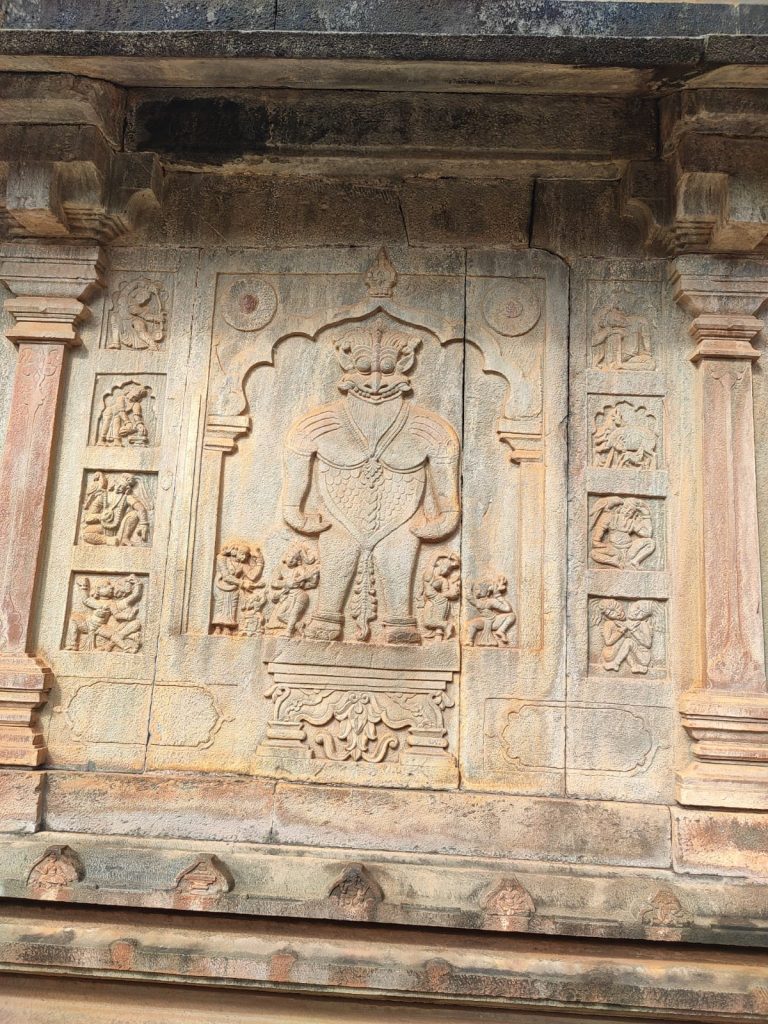
The Spiritual Experience
Lord Veerabhadra’s Shrine: Veerabhadra, a fierce form of Shiva, represents courage and protection.
Main Sanctum (Garbhagriha): The Shiva Lingam in the sanctum exudes divine energy, drawing devotees seeking blessings and inner peace.
Goddess Parvati’s Shrine: Symbolizing grace and devotion, Parvati’s idol reflects maternal strength and divine beauty.
Rituals, Pujas, and Festivals
Daily Rituals and Offerings
The temple conducts multiple pujas daily, including:
- Morning Abhisheka: Sacred ritual bathing of the Shiva Lingam with milk, ghee, honey, and holy water.
- Deepa Aradhana: A lamp-lighting ceremony that fills the temple with a mesmerizing glow.
- Prasadam Distribution: Devotees receive sacred offerings (prasadam), including Panchamruta (a mix of milk, honey, ghee, sugar, and curd).
Festivals and Grand Celebrations
The temple is particularly vibrant during festivals, drawing thousands of pilgrims and tourists.
- Mahashivaratri: A grand celebration of Lord Shiva, with night-long chanting, bhajans, and special poojas.
- Navaratri: Dedicated to Goddess Durga, featuring processions, cultural performances, and traditional dances.
- Kartika Deepotsava: The festival of lights, where thousands of oil lamps illuminate the temple premises, creating a magical ambiance.
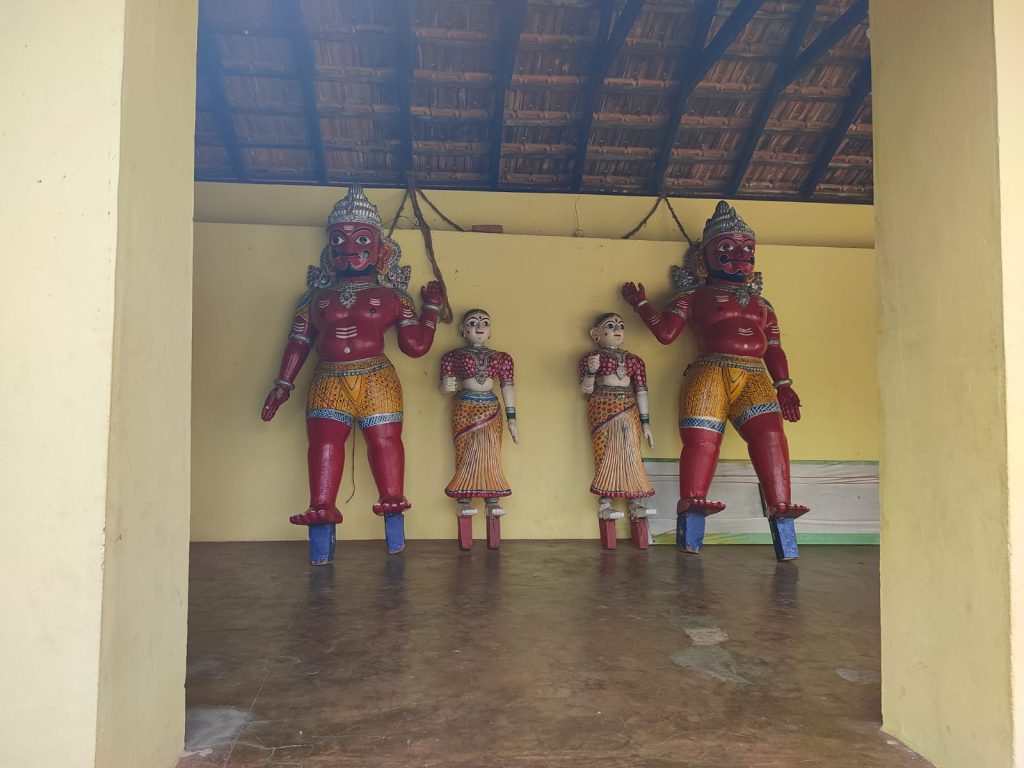
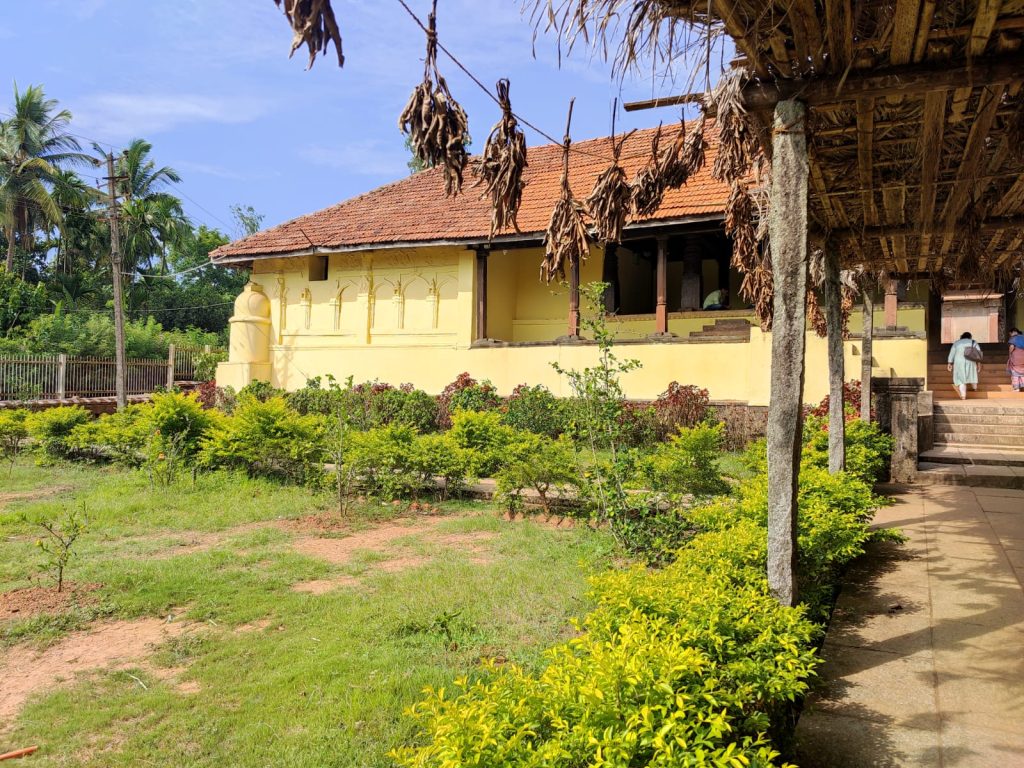
The Keladi Museum and Historical Research Centre
While the Keladi Rameshwara Temple stands as a spiritual and architectural marvel, offering a glimpse into the artistic grandeur of the Nayaka dynasty, the Keladi Museum and Historical Research Centre serves as a treasure trove of historical knowledge. It provides visitors with an immersive journey into the glorious past of the Keladi Nayakas, preserving their legacy through rare artifacts, inscriptions, manuscripts, and relics that speak volumes about their rule, governance, and cultural patronage.
What to Expect at the Museum
The museum is a must-visit destination for history enthusiasts, scholars, and tourists eager to explore the grandeur of the Keladi Nayakas beyond the temple walls. It houses an extensive collection of ancient documents, intricate sculptures, and meticulously preserved weaponry, all shedding light on the dynasty’s administration, military strategies, artistic achievements, and religious inclinations.
Each exhibit tells a story of resilience, governance, and artistic excellence, offering visitors a chance to connect with the past and appreciate the remarkable contributions of the Nayaka rulers.
Notable Exhibits
The museum boasts a wide array of exhibits, each providing a unique perspective on different aspects of Keladi’s history. Some of the most significant displays include:
Ancient Palm-Leaf Manuscripts
One of the most fascinating collections in the museum is the set of ancient palm-leaf manuscripts, which provide valuable insights into the administrative system of the Keladi Nayakas. These meticulously inscribed documents detail the kingdom’s trade policies, taxation methods, and governance strategies, illustrating the Nayakas’ efficient rule. Some manuscripts also include religious scriptures and literary works, reflecting their deep patronage of Hindu traditions and scholarly pursuits.
Inscriptions and Copper Plates
The copper plate inscriptions are among the most historically significant exhibits in the museum. These plates, engraved with Sanskrit and Kannada scripts, contain royal decrees, land grant records, and agreements with neighboring rulers. They serve as primary sources for understanding the socio-political and economic structures of the Keladi kingdom.
The inscriptions also highlight diplomatic relations, military campaigns, and religious endowments made by the Nayaka rulers, reinforcing their commitment to cultural preservation and governance. Some plates even showcase intricate artistic embellishments, revealing the aesthetic sensibilities of the period.
Sculptures and Artistic Relics
A visit to the museum reveals a stunning collection of sculptures that capture the artistic brilliance of the Keladi Nayaka era. These include intricately carved statues of Hindu deities, temple friezes, and ornamental stone carvings that once adorned the grand temples built under Nayaka patronage. The sculptures, influenced by Dravidian, Vijayanagara, and Hoysala styles, demonstrate a seamless blend of artistic traditions that defined Keladi’s unique cultural identity.
Additionally, several bronze and metal idols, depicting gods and goddesses, highlight the advanced metallurgical skills of the era. These artifacts are a testament to the Nayakas’ devotion and their role in the continuation of temple traditions.
Weapons and Military Artifacts
The weapons collection at the museum is a powerful reminder of the military prowess of the Nayaka rulers. It includes:
- Swords and Daggers used in close combat, often adorned with intricate carvings and royal insignias.
- Spears and Lances, which were essential for the Nayakas’ cavalry and infantry forces.
- Shield and Armor Sets, demonstrating the advanced defensive strategies employed by the Nayakas during battles.
- Cannonballs and Firearms, signifying their adaptation to evolving warfare techniques.
These military artifacts paint a vivid picture of the Nayakas’ defense strategies and their role in resisting external invasions, particularly during Queen Keladi Chennamma’s defiance against the Mughal forces.
A Living Tribute to History
The Keladi Museum and Historical Research Centre stands as an enduring tribute to the remarkable legacy of the Nayaka dynasty. Through its extensive collection of artifacts, visitors gain a deeper understanding of Keladi’s rise as a powerful kingdom, its cultural advancements, and its role in preserving regional traditions. Whether you are a history buff, an art lover, or a casual traveler, the museum offers a captivating experience that bridges the past with the present, ensuring that the heroic tales and artistic brilliance of the Keladi Nayakas continue to inspire generations to come.
Nearby Places to Visit: Exploring the Hidden Gems
Keladi, with its rich historical and cultural heritage, is not only a fascinating destination in itself but also serves as a gateway to several nearby attractions. Whether you are a history enthusiast, a nature lover, a spiritual seeker, or an adventure enthusiast, the region offers something for everyone. Here are some must-visit places near Keladi:
Ikkeri Aghoreshwara Temple
Just a short drive from Keladi, the Ikkeri Aghoreshwara Temple stands as a magnificent testament to the architectural brilliance of the Nayaka dynasty. Dedicated to Lord Aghoreshwara (a form of Lord Shiva), this temple is renowned for its monolithic granite pillars, intricately carved friezes, and towering entrance gopuram.
The temple’s Dravidian and Vijayanagara architectural influences are evident in its beautifully sculpted deities and detailed relief carvings, depicting mythological tales from Hindu scriptures. A unique feature of this temple is its monolithic Nandi (bull) statue, which adds to the grandeur of the complex. The serene atmosphere and spiritual significance make it a perfect place for both devotees and history buffs.
Jog Falls
One of the most breathtaking natural wonders of India, Jog Falls is a must-visit destination for nature lovers and photography enthusiasts. Plunging from a height of approximately 830 feet (253 meters), Jog Falls is the second-highest plunge waterfall in India and is created by the Sharavathi River.
Unlike segmented waterfalls, Jog Falls consists of four distinct cascades:
- Raja (the most prominent and tallest fall)
- Rani (a graceful, misty fall)
- Roarer (a powerful, thundering fall)
- Rocket (a fast, narrow stream shooting down with immense force)
The best time to visit is during the monsoon season (June to September) when the falls are at their fullest, creating a mesmerizing spectacle. There are several viewpoints, and for the adventurous, trekking down to the base of the falls offers a thrilling experience.
Sigandur Chowdeshwari Temple
Situated on the banks of the Sharavathi River, the Sigandur Chowdeshwari Temple is a revered pilgrimage site known for its mystical aura and miraculous powers. Dedicated to Goddess Chowdeshwari, this temple attracts thousands of devotees who believe that the goddess provides divine protection and justice to those who seek her blessings.
One of the unique aspects of this temple is the “Sigandur Ferry”, which transports pilgrims across the river, adding to the spiritual journey. Devotees visit the temple seeking solutions to personal and legal disputes, as it is believed that the goddess ensures justice and fairness. The temple’s peaceful ambiance, combined with its strong spiritual presence, makes it a deeply moving experience for visitors.
Mandagadde Bird Sanctuary
For birdwatching enthusiasts and nature lovers, the Mandagadde Bird Sanctuary offers a tranquil escape into the heart of Karnataka’s wilderness. This small yet significant sanctuary, located on an island in the Tunga River, is home to a variety of migratory and native bird species.
Some of the prominent bird species found here include:
- Egrets
- Cormorants
- Pond Herons
- Darters (Snake Birds)
The best time to visit is from July to October, when thousands of birds migrate to the sanctuary for breeding. With lush greenery, serene waters, and the soothing sounds of birds, this sanctuary provides an ideal setting for relaxation, photography, and wildlife appreciation.
Kodachadri Hills
A paradise for trekkers and adventure seekers, Kodachadri Hills is one of the most picturesque trekking destinations in Karnataka. Nestled in the Western Ghats, this hill range is steeped in spiritual significance, as it is believed to be the meditation site of Adi Shankaracharya, the great Indian philosopher and saint.
Trekking Experience
- The trek to Kodachadri is an exhilarating journey through dense forests, cascading waterfalls, and breathtaking ridges.
- The trail includes Hidlumane Falls, a stunning multi-tiered waterfall that serves as a refreshing stop for trekkers.
- The sunset view from the Kodachadri peak is one of the most mesmerizing sights, offering a panoramic vista of the Arabian Sea on a clear day.
Spiritual Significance
Atop the hill lies the Shankaracharya Peetha, a small temple dedicated to Adi Shankaracharya, commemorating his meditation on these sacred hills. Nearby, the Mookambika Temple at Kollur is also a major pilgrimage site, drawing devotees from across India.
Best Time to Visit
The best time for trekking Kodachadri is between September and February, when the weather is pleasant and the landscape is lush green. Whether you seek an adventurous trek or a spiritual retreat, Kodachadri offers an unforgettable experience.
Keladi: Where History, Nature, and Spirituality Unite
A visit to Keladi is not just about discovering the remnants of the great Keladi Nayaka dynasty—it is an immersive journey through Karnataka’s rich cultural, spiritual, and natural heritage. The architectural grandeur of the Ikkeri Aghoreshwara Temple, the thunderous beauty of Jog Falls, the mystical aura of Sigandur Chowdeshwari Temple, the serene landscapes of Mandagadde Bird Sanctuary, and the adventurous trails of Kodachadri Hills offer an unparalleled blend of experiences.
For history enthusiasts, Keladi is a living museum of the Nayakas’ glorious past, with its temples, sculptures, and inscriptions narrating tales of valor, devotion, and artistic excellence. Spiritual seekers will find solace in the divine ambiance of its temples, while nature lovers and adventure seekers can explore the majestic waterfalls, bird sanctuaries, and trekking trails. Whether you are on a pilgrimage, a historical expedition, or an adventure getaway, Keladi and its surrounding attractions promise a journey filled with wonder, exploration, and inspiration. For ease of commute, check out the map below
Frequently Asked Questions (FAQ)
Q. What is the historical significance of Keladi?
Keladi was the capital of the Keladi Nayaka dynasty, which rose after the fall of the Vijayanagara Empire. The Nayakas were known for their military strength, art patronage, and devotion to Hindu traditions.
Q. Who was Keladi Chennamma?
She was a brave queen who resisted Aurangzeb’s Mughal forces, protecting her kingdom and Hindu culture. Her legacy remains a symbol of strength and courage.
Q. What are the must-visit places in and around Keladi?
Keladi Rameshwara Temple, Keladi Museum, Ikkeri Aghoreshwara Temple, Jog Falls, Sigandur Chowdeshwari Temple, Mandagadde Bird Sanctuary, and Kodachadri Hills.
Q. What is the best time to visit Keladi?
October to March for pleasant weather. Visit during the monsoon (June to September) for Jog Falls in full flow.
Q. How can I reach Keladi?
By Air: Mangalore International Airport.
By Train: Sagar Jambagaru Railway Station.
By Road: Well connected to Shimoga and Sagara.
Q. Are there accommodations near Keladi?
Yes, Sagar, Shimoga, and Jog Falls have budget lodges, mid-range hotels, and nature-friendly resorts.
Q. Is Keladi a good family destination?
Yes! It offers a mix of history, spirituality, and nature, making it enjoyable for all ages.
Q. Are there trekking opportunities near Keladi?
Yes, Kodachadri Hills is a popular trek with stunning views, waterfalls, and lush forests.
Q. What should I carry when visiting Keladi?
Comfortable clothing, water, snacks, rain gear (if visiting in monsoon), camera, and temple-appropriate attire.
Q. Is photography allowed at the temples and historical sites?
In most places, yes, but some temples and museums may have restrictions. Check locally before clicking photos.


